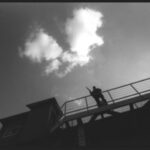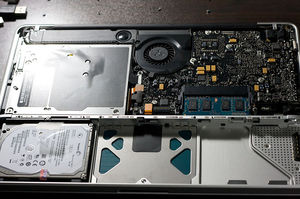Like any other hobby, model railroading can be both expensive and confusing, especially for a beginner. Without a guide or mentor, rookies may soon find themselves overwhelmed with options and may give up on this great pastime before giving it a chance. Using this quick guide may save you from a lot of heartache and might even lead you to a lifetime of fun and enjoyment.
There are a few questions to ask before buying a train set, such as how old the recipient is and how interested they are in model railroading. If you’re thinking about buying a train for your four year old nephew, I would keep it simple and inexpensive. Also, buying a train for someone with the hope they may enjoy it could be a costly error. With this in mind, let’s assume that this model train will be for an adult with a keen interest in railroading.
Probably the best way to enter the world of model railroading is to purchase a complete starter set, including a locomotive, a half-dozen cars, a loop of track, and a transformer. Also, make sure this set has some easy-to-understand instructions regarding setup and maintenance. A quick trip to your local hobby shop will reveal a number of different types of trains, broken down by scale.
Scale reference the size ratio between the model train and the real one. G-scale trains are really big (22.5:1) and are used almost exclusively in outdoor settings. I don’t recommend anything like this for beginners since running trains outside can often be troublesome for even the most experienced railroader. These types of trains aren’t common and can be very expensive.
O-Scale (48:1) is a bit more common and is normally reserved for indoor use. S-scale is a 64:1 ratio train, while N is 160:1 and the smallest of all is the Z-scale, measuring a mere 220:1. For beginners however, I recommend HO-scale (87.1:1). HO is by far the most common, making it the easiest to find compatible rolling stock upgrades and scenery materials. Its commonality also means that it’s usually less expensive than other sizes while still providing enough realism to make your experience enjoyable.
Like almost everything else in life, you get what you pay for. This isn’t to say that less expensive sets aren’t any good or any fun, but some may lack the details that costlier sets have. Don’t look for a cheap set, but do look for an inexpensive one. Expect to pay at least $120.00 USD for a decent starter set. Of course, it’s easy enough to get caught up in things and find yourself shelling out well over $300. Remember, your first train set doesn’t have to be a new one. There are plenty of great deals on some fantastic pre-owned sets.
In the end, I highly recommend visiting some hobby shops in your area to see what’s available. Talk to local shop owners and enthusiasts to develop a feel for what trains might be right for you. You may find that these new connections can help you procure a great set at a very good price. Old hands are always glad to welcome new model railroaders and might be willing to pass along some of collection for a song. At the very least you’ll learn a lot about your new hobby and make some new acquaintances. Whatever route you choose, I’m sure you’ll find model railroading an entertaining and rewarding pastime.



